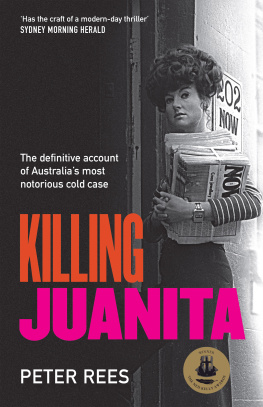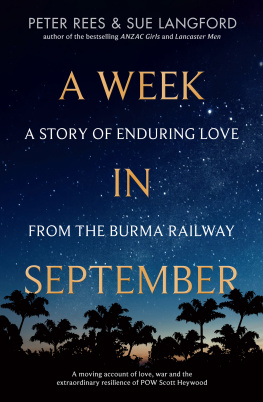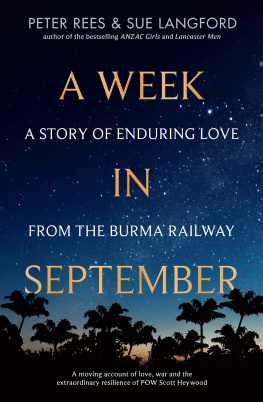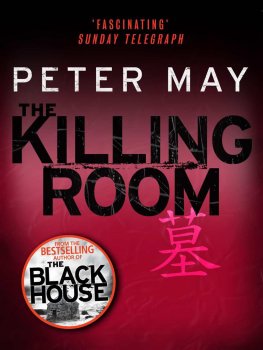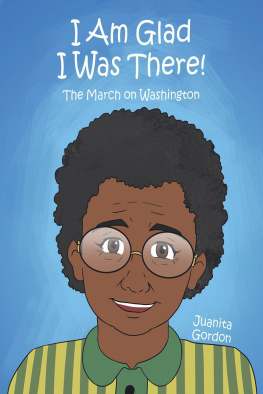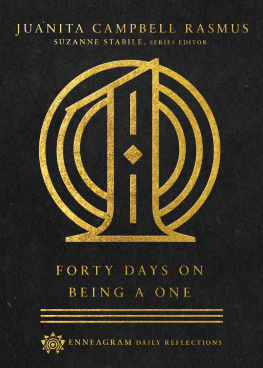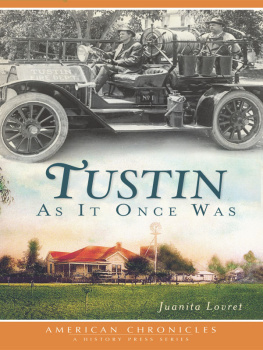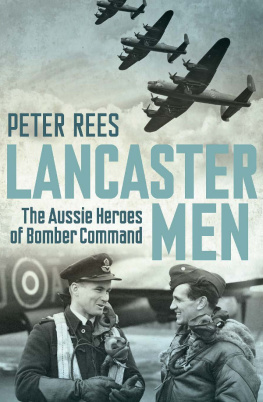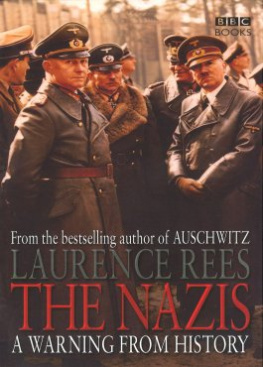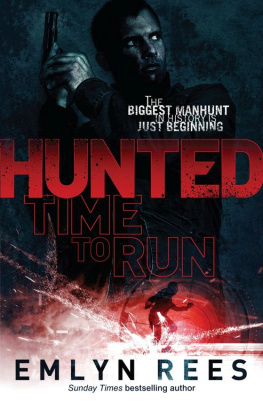Peter Rees - Killing Juanita
Here you can read online Peter Rees - Killing Juanita full text of the book (entire story) in english for free. Download pdf and epub, get meaning, cover and reviews about this ebook. year: 2021, publisher: ABC Books, genre: Non-fiction. Description of the work, (preface) as well as reviews are available. Best literature library LitArk.com created for fans of good reading and offers a wide selection of genres:
Romance novel
Science fiction
Adventure
Detective
Science
History
Home and family
Prose
Art
Politics
Computer
Non-fiction
Religion
Business
Children
Humor
Choose a favorite category and find really read worthwhile books. Enjoy immersion in the world of imagination, feel the emotions of the characters or learn something new for yourself, make an fascinating discovery.
- Book:Killing Juanita
- Author:
- Publisher:ABC Books
- Genre:
- Year:2021
- Rating:4 / 5
- Favourites:Add to favourites
- Your mark:
- 80
- 1
- 2
- 3
- 4
- 5
Killing Juanita: summary, description and annotation
We offer to read an annotation, description, summary or preface (depends on what the author of the book "Killing Juanita" wrote himself). If you haven't found the necessary information about the book — write in the comments, we will try to find it.
Killing Juanita — read online for free the complete book (whole text) full work
Below is the text of the book, divided by pages. System saving the place of the last page read, allows you to conveniently read the book "Killing Juanita" online for free, without having to search again every time where you left off. Put a bookmark, and you can go to the page where you finished reading at any time.
Font size:
Interval:
Bookmark:
Contents

For my daughters, Gemma and Caitlin
And for Jessie, Clare and Charles
CONTENTS
Jim Anderson | Manager of the Carousel Cabaret and the Venus Room and friend of Frank Theeman |
Neathia Anderson | Wife of Jim Anderson |
Karl Arkins | Officer in charge of the Nielsen investigation |
Loretta Crawford | Receptionist at the Carousel Cabaret and drag queen |
David Farrell | Juanitas partner, and business associate in NOW for seven years |
John Glebe | Union leader, and Juanitas sometime lover |
Neville Gruzman | Architect for Frank Theemans Victoria Street company, 1975 |
Fred Hanson | New South Wales Police Commissioner, 197276. |
Arthur King | Kidnapped Victoria Street activist; no relation to Marilyn King |
Marilyn King | Waitress at the Carousel Cabaret, drag queen and Eddie Triggs girlfriend |
Norm Maroney | Police officer on the Nielsen investigation |
Lloyd Marshall | Public relations manager for the Carousel Cabaret and Neathia Andersons lover |
Shayne Martin-Simmonds | Employee of Jim Anderson |
Jack Mundey | New South Wales Builders Labourers Federation boss |
Juanita Nielsen | Proprietor and editor of the newspaper NOW, member of the Mark Foys family, and activist against Frank Theemans redevelopment plans for Victoria Street |
Abe Saffron | Legendary Kings Cross figure and owner of the Carousel Cabaret |
Frank Theeman | Wealthy Sydney businessman turned Victoria Street property developer |
Michael Theeman | Younger son of Frank Theeman and Victoria Street real estate agent |
Tim Theeman | Son of developer Frank Theeman and friend of Jim Anderson |
Eddie Trigg | Manager of the Carousel Cabarets VIP bar |
I n 1976, some months after heiress, newspaper publisher and anti-development campaigner Juanita Nielsen disappeared, I was working in Sydney as a journalist and heard through a mutual acquaintance that a man called Arthur King had been abducted in Victoria Street, Kings Cross, two years earlier. Arthur was a resident of Victoria Street who, like Juanita, had become an activist to save it from demolition. I asked him if he might like to talk about it. From that point, Arthur and I have tried to find out what happened to Juanita and who was responsible.
Our quest has led to unexpected places and encounters with twilight people, police, politicians. It has sparked a federal parliamentary inquiry into the National Crime Authority. We met in secret at Martin Place with former New South Wales Police Commissioner Peter Ryan and ultimately with two witnesses to the events in a Kings Cross nightclub on the day Juanita died. It has also shed light on the inability of the New South Wales police to solve a murder that haunts them to this day, and which will continue to cast a shadow over the service.
Our commitment to finding the truth of this seminal murder has remained undimmed. Since this book was first published in 2004, much new information has emerged that has shed new light on what happened to Juanita. The story of tracking down this information has become a key part of the Juanita Nielsen story, to the point where Arthur King and I found ourselves actors in the saga rather than objective reporters.
A woman in the prime of her life was murdered while those responsible endured no punishment. Who killed Juanita? That question has been whispered in Kings Cross, written on walls around Sydney and shouted from newspapers, but never definitively answered.
The leader of the Opposition said there was something akin to dereliction of duty because the Government has not solved the disappearance of Juanita Nielsen. Again, I can only tell the leader of the Oppositionin fact all honourable membersthat the most skilled, senior and experienced police officers in this State were, and are, involved in pursuing inquiries into the disappearance of Juanita Nielsen. Though a thorough and extensive inquiry has been conducted into her disappearance, that crime, if it is such, has not been solved.
Premier Neville Wran, New South Wales State Parliament, 23 April 1979
J uanita Nielsen removed the hand that had wandered onto her knee. Sammy Lee, legendary showman of Kings Cross, was unfazed. With his chunky gold ring and flashy cuff links, Sammy thought he had a right to all the female flesh in the Crossparticularly one to whom he was paying money. Sammy had bought space for a half-page ad in Juanitas fledgling local paper, NOW, to mark the opening of the new upstairs VIP cocktail lounge in his nightclub, Les Girls. The bar was a plush red velvet affair with studded lounges and a dropped bar where customers ordering drinks could gaze down the cleavages of the barmaids, who obligingly wore low-cut tops. Subtlety was never Sammys style.
The lights were soft, and Juanita sipped champagne as she talked with him about the new bar. The hand moved onto her bare knee once more. She was thirty-one and did not accept unwelcome advances, especially from someone old enough to be her father. Again she removed it, only to have it return. That was enough. Fed up, Juanita walked out, down the stairs that led onto Roslyn Street and the late winter night. Kings Cross was like thatpeople grasping at whatever they could, and knocked back once, theyd have another go. It was August 1968 and Juanita would not return to the club for another seven years. In that time there would be no more advertising for Les Girls. When she went up those stairs again on 4 July 1975 the club would still be the home of the Les Girls floorshow but it would be under different ownership and renamed the Carousel Cabaret. And that day would be the last day of her life.
Seven years. What a formative time in the story of Sydney. Soldiers on R&R from the Vietnam War came and went from Kings Cross, bringing money and a demand for women and hard drugs. Police corruption spread unimaginably. But there was more: a deadly battle would be fought over the future of the most beautiful promenade of the CrossVictoria Street. It was the elegant, tree-arched street where Juanita lived, running roughly parallel to the seedy glitz of Darlinghurst Road. Juanita could not know it then, but the two worlds were about to collide. The impact would shake Victoria Street to its very foundations. And through her paper Juanita was to play a critical part in reawakening political action at the grassroots level in Sydney, which would provide impetus for the growth of the green ban movement across Australia.
The Carousel was in a two-storey building with a curved glass faade on the corner of Roslyn Street and Darlinghurst Road. In 2001 the building underwent extensive renovation that changed it forever. Architecturally it might have been nondescript but as the home of Les Girls since 1964, the club had been the venue for risqu floorshows featuring men dressed as women in lam and sequins. Nightly, as Sydneysiders shed the austerity of the early post-war years, Les Girls crossed sexual boundaries. It became a mecca for drag queens; Carlotta, the most famous of them all, and lesser lights such as Laurence, who went by the name Loretta Crawford. Seven years after Juanitas visit to Les Girls her path would cross Lorettas at the Carousel Cabaret.
Next pageFont size:
Interval:
Bookmark:
Similar books «Killing Juanita»
Look at similar books to Killing Juanita. We have selected literature similar in name and meaning in the hope of providing readers with more options to find new, interesting, not yet read works.
Discussion, reviews of the book Killing Juanita and just readers' own opinions. Leave your comments, write what you think about the work, its meaning or the main characters. Specify what exactly you liked and what you didn't like, and why you think so.

